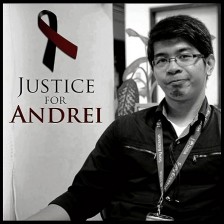Top education news in the year that was
Diliman on rails
The 465-meter University of the Philippines-Department of Science and Technology (UP-DOST) Automated Guideway Transit (AGT) made its maiden trip on the Diliman campus on Dec. 14, nearly a year and a half after it was launched. Constructed by Miescor Builders Inc., the P31-million AGT stands on a 6.1-meter-high, 465-meter-long track and runs on rubber wheels to reduce the noise factor. The DOST said the AGT is an entirely Filipino venture and will be a “fully automated, driverless” electricity-run monorail.
K to 12: Reform beyond ABC and 123
When 21.49 million students returned to over 45,000 public schools in June last year, they returned to a system that had embraced a more internationally accepted program consisting of kindergarten plus 12 years of basic education.
In January last year, President Benigno Aquino III had signed Republic Act No. 10157, or the Kindergarten Act, which mandated 5-year-olds to spend a year in kindergarten class in preparation for entry to Grade 1.
Article continues after this advertisementAfter kindergarten, a child will now have to go through six years of elementary education and six years of high school under the K to 12 system. Grades 7 to 10 make up junior high school and Grades 11 and 12, senior high school.
Article continues after this advertisementThe year 2012 marked the phasing in of the new curricula for Grades 1 and 7 in the K to 12 reform program targeted for complete implementation by 2018.
Mother tongue
Not only did the K to 12 initiative lengthen the school stay of young students, it also revived the use of the mother tongue as a medium of instruction in the first three years of elementary education.
In the new Grade 1 curriculum, pupils are taught in the local language or the predominantly used language in the area (private schools where the children are mostly English-speaking can thus use English). In June 2013 the mother tongue education program will include the second grade and by 2014, the third grade.
The curriculum that was launched for Grade 7, on the other hand, was a revised curriculum for first year high school.
The Alliance of Concerned Teachers threw punches at what it considered the premature and “haphazard” implementation of K to 12: “There is no law yet authorizing the implementation of the full K to 12 education program. The curriculum is not yet ready. Funds are insufficient to cover the basic inputs, such as shortages on teachers, classrooms, textbooks, chairs and sanitation facilities.”
It was not until October that the House of Representatives approved on second reading House Bill No. 6643, which would enact the Enhanced Basic Education Act into law.
If the bill makes the grade in Congress, it will move on to the Senate, where it will wait for another passing rate before it can be signed by the President into a law.
Logistics
The Department of Education (DepEd) estimated there were 5.76 million students in high school, 14 million in elementary school and
1.73 million in kindergarten.
It announced that it would hire up to 13,000 teachers to partially fill a shortage of some 50,000 teaching staff this school year. It suggested that the shortage of teachers could be solved by the local government units (LGUs) hiring additional teachers who would be paid under the school board funds.
The DepEd also acknowledged that 50,000 classrooms needed to be built, and it was looking at 30,000 to be built through the Public-Private Partnership program while the remaining 20,000 would be built by LGUs.
The department promised to address the classroom shortage within the next two years, but with Tropical Storm “Sendong” and Typhoon “Pablo” wrecking many schools in Mindanao, that promise is standing on shaky ground at the moment.
Sweet fruit for the ‘lemons’
Finally signed into law last month, Republic Act No. 10354, or the reproductive health (RH) law, will be providing age-appropriate sex education to 7.5 million public school students through the Department of Education.
The law was enacted after languishing for 13 long years in Congress, but not before spawning some animosity among a few Catholic universities that created quite a buzz in the social media.
In August of last year, the Catholic Bishops’ Conference of the Philippines called for the investigation of Ateneo de Manila University (ADMU) faculty members who endorsed the controversial bill, concluding that said endorsement was tantamount to teaching concepts against Church laws.
But officials of the Jesuit-run university saw no need to investigate the professors who supported the then-pending bill, even as they stressed that ADMU was fully behind the Church in opposing the RH bill.
By September, the oldest Catholic university in Asia had joined the fray unwittingly through an editorial that appeared in the Varsitarian, the official student publication of the University of Santo Tomas.
Titled “RH bill, Ateneo, and La Salle: Of Lemons and Cowards,” the editorial took to task the 192 professors of ADMU and their 45 colleagues from De La Salle University (DLSU) for their support of the RH bill and called them “intellectual pretenders and interlopers.”
The editorial also criticized the ADMU and DLSU administrations for not reprimanding their faculty members upon their open defiance of the bishops.
Of course, the “lemons and cowards” did not take the vitriol coming from Sampaloc passively. Students from ADMU, DLSU and other universities soon posted scathing replies to Varsitarian’s name-calling in social media.

PRESIDENT Aquino hands the Lingkod ng Bayan plaque to Garcia, as
Dr. Fernando T. Duque III, chair of the Civil Service Commission, looks on.
‘Literate’ city
The City of Balanga received in Baguio City the top prize in the National Literacy Awards last year.
Dr. Ronaldo A. Pozon, officer in charge of Balanga’s division of city schools, received the award on behalf of Mayor Jose Enrique Garcia III, who was in Malacañang on the same day receiving, from President Aquino no less, the Presidential Lingkod ng Bayan Award for outstanding work performance.
Garcia was the first to get into the Inquirer Learning Corner bandwagon, donating copies of the Inquirer for the school year 2010-2011 to the historic Balanga Elementary School in Bataan’s capital city.
This was followed by donations of subscription to the Inquirer for one school year to Cataning Elementary School, also in Balanga, for the past two years.
Garcia, who aims to earn for Balanga the title of “University Town,” also actively supports every year the Department of Education’s Brigada Eskwela project, which enjoins volunteers from all sectors to help prepare public schools for a new school year by painting and repairing classrooms and school furniture and providing things students will need.
Violence and bullying get worse
By year’s end, at least half a dozen young people’s lives had been cut short in what could only be described as senseless violence on and off campus.
Two law freshmen of San Beda College (SBC) on Mendiola died in the hands of people they hoped would become their brothers.
Marvin Reglos, 25, died of injuries sustained during hazing rites of the Lambda Rho Beta fraternity in February.
In July, 21-year-old Mark Andrei Marcos also succumbed to injuries sustained as his “suitability” to be a member of Lex Leonum Fraternitas was violently put to the test by would-be “brods.”
SBC, which has always banned fraternities, has expelled all those involved in the two hazing cases except for two who, according to Dr. Joffre Alajar, chair of the accountancy department, were appealing their ouster.
At nearby Far Eastern University (FEU) on Nicanor Reyes Street (formerly Morayta), two members of the school’s pep (cheer) squad were shot dead by unidentified gunmen.
Jerald Ramos, 21, and Juan Paolo Nepumuceno, 17, were both members of the Green Bisons, part of the FEU cheering squad. A third student, 18-year-old Adrian Santiago, survived the attack.
No less alarming, although the victim luckily survived, was the stabbing of Joanne Lourdes Reyes, 20, a University of Santo Tomas student, on the FEU campus by female students. Charges of frustrated homicide had since been filed against the suspect FEU students.
Also at FEU, Daniel Imir, 18, a hotel and restaurant management (HRM) student, was wounded when he was allegedly shot by two fellow HRM students.
At Adamson University on San Marcelino Street, Kevin Roy Castro, a 21-year-old information technology student, was stabbed by fellow students. The suspects are now facing frustrated murder cases, aside from administrative charges in the university.
Over at the Diliman republic, one female student was severely beaten and another stabbed in separate incidents of attempted robberies on the University of the Philippines (UP) campus.
In UP Los Baños, criminals preyed on students off campus, sexually assaulting and murdering a teenaged girl and killing one or two during robberies.
These incidents are nowhere near as horrific as the massacre of 20 kindergarten pupils—and six adults—in Sandy Hook Elementary School in Newtown, Connecticut, United States.
Or the wounding of 22 students and one adult on the same day as the Newtown killings by a knife-wielding man outside a primary school in China.
While motives were discernible, if not outright obvious, in the Philippine incidents, authorities could not even begin to guess at the perpetrators’ reasons in the US and China cases.
Reacting to the local incidents, Julito Vitriolo, Commission on Higher Education (CHEd) executive director, said campus security should be among the top priorities of private universities.
With the money they earned from students, Vitriolo said schools could afford to pay for tighter security measures, including equipment like metal detectors, spy cameras, etc.
Growing menace
While bullying has always been around, concern is growing because, as experts have warned, even if bullying does not cause the victim physical injury, its emotional and psychological effect can result in severe depression that can lead to suicide. Education Secretary Armin Luistro described suicide as “violence against one’s self.”
The prime case of bullying last year involved Jesus Manuel Garcia, an 18-year-old senior high school student of Colegio de San Agustin in Dasmariñas Village, Makati City.
Allan Bantiles, father of Garcia’s classmate, allegedly slapped the boy then pointed a loaded gun at him, enraged because Garcia reportedly punched the younger Bantiles in retaliation for the bullying he was getting.
Aside from facing criminal charges, Bantiles also had his gun permit revoked by the Philippine National Police.
Two men were arrested for allegedly beating up a 17-year-old student at Las Piñas East High School who, they claimed, was a bully.
Going digital
Even as the Department of Education (DepEd) tried to cope with face-to-face harassment in school, it also had to adapt to an emerging form of torment in the digital age.
In the United States, at least three suicides by teens were linked to online bullying, particularly on social networking sites.
Thus, Department Order No. 40, the DepEd’s Child Protection Policy, sought to address both actual and cyberbullying.
On its part, CHEd said it monitored regularly the implementation of various student services in higher education institutions.
Luistro stressed that in dealing with bullying, it was important to “heal the aggression that’s in our hearts and minds.”
Antisocial site
The popularity of the social networking site Facebook got into trouble several graduating high school students for postings their schools deemed inappropriate.
In March, two students were banned by St. Theresa’s College (STC) High School in Cebu City from attending their graduation ceremonies because of a photo on Facebook showing them in bikinis, with one of them holding a cigarette in one hand and a liquor bottle in the other.
The postings were considered “obscene” by school authorities. Although a Cebu Regional Trial Court (RTC) ordered the school to lift the ban, the school stood its ground.
At around the same time, six male students of Infant Jesus Academy (IJA) in Marikina City were delisted from the roster of high school graduates for reportedly uploading Facebook photos of themselves kissing each other.
Although the students were allowed to march with their class, their names were not called when diplomas were handed out. The school chancellor said the photos were a “violation of school rules.”
STC officials said the girls violated provisions in the school handbook, which listed do’s and don’ts for students on and off campus.
One of the penalties for violating the rules was exclusion from graduation ceremonies.
The students claimed their Facebook accounts were private and they were deprived of due process.
In defiance of the RTC order, the students and their parents were barred from the STC premise on graduation day for not having the proper invitations and car passes. Court representatives were also barred from entering the school.
In the Marikina incident, the boys’ parents were told that the posting on Facebook of the boys, wearing their school uniforms, kissing each other was a “violation of school rules.”
Parents were told, aside from not being called onstage, the boys’ diplomas would also be withheld, although the students could still enroll in the college of their choice.
The students claimed the Facebook photos uploaded on the popular social networking site Facebook showing them kissing were “fake and a product of a camera trick.”
Just the facts about martial law
Four decades after Ferdinand E. Marcos declared himself virtual ruler for life by proclaiming martial law, the Department of Education (DepEd) grapples with the issue of how to teach that time in Philippine history.
Education Secretary Armin A. Luistro is mindful that, at this point, perceptions of martial law differ.
Many Filipinos born after the Edsa revolution that toppled the Marcos regime do not have any opinion about the 14 years of dictatorship that followed the proclamation of martial law.
On the other hand, emotions still run high for many of those who lived through that period, which include President Aquino and his family.
Victims, survivors, martial law architects and rulers, historians, people whose lives were made better or worse have their own ideas, colored by personal experiences and biases, about that period.
So the DepEd announced a “new direction” in teaching Filipino students about the martial law years, “veering away from the current textbook-based approach where the students ‘imbibe the biases’ of the historian that authored the book.”
In the new method, he said, learners would have to make their own conclusions about martial law based on their reading and research.
Luistro would not want students to be told outright if martial law was good or bad. Instead, he would want them to form their own opinion about the martial law era.
“If you teach judgment or interpretation, I don’t think that’s education,” Luistro said.
The secretary said, under the present setup, students, especially those in high school where martial law was widely discussed, based their knowledge on what was in the textbook they were using.
Learners would be encouraged to seek primary sources, like victims and survivors, for more information on that period, including claims of disappearances and killings.
The secretary anticipates “not everyone would come to the same conclusion about martial law.”
Maria Serena Diokno, a historian who chairs the National Historical Commission of the Philippines, agreed that children should learn as much as possible, so they could make their own judgments.
Diokno said textbooks were inadequate for teaching martial law, as they lacked facts, were filled with errors and had a biased perspective.
But the Akbayan party-list group does not favor judgment-free teaching.
It insists martial law “atrocities” be taught at all school levels. It said the cruelty of this period had “eluded the collective memory of Filipinos.”


